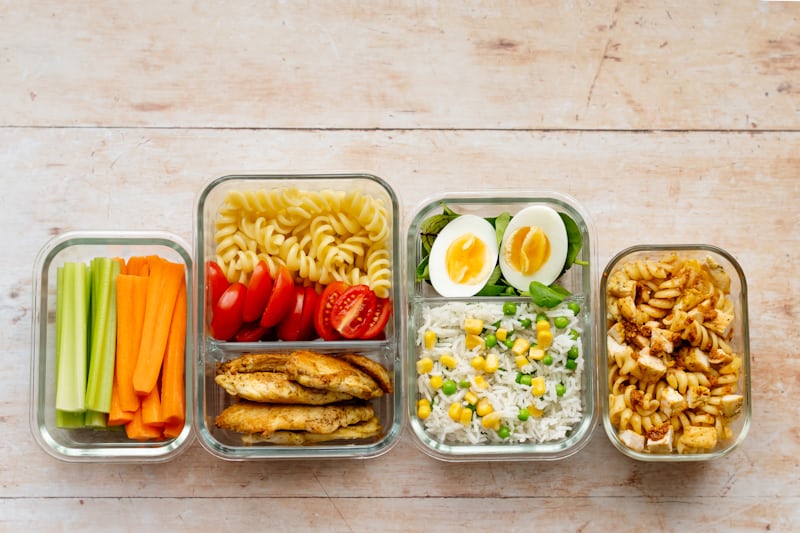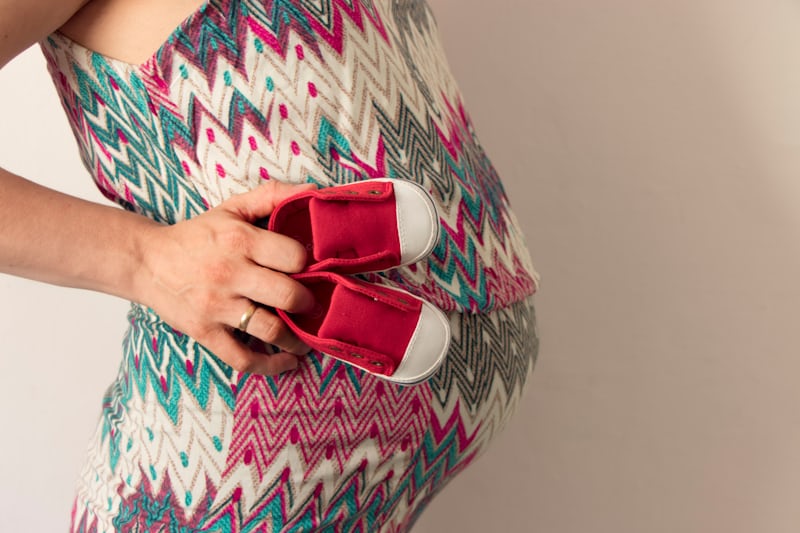Why Post-Pregnancy Weight Loss Feels Different
- Hormone shifts: After birth, estrogen and progesterone drop while prolactin and oxytocin rise (especially if breastfeeding). These changes can affect appetite, fluid retention, and mood.
- Recovery first: Your pelvic floor, core, and connective tissues need time to heal (vaginal birth or C-section). Early overexertion can set you back.
- New routine: Feeding schedules, night wakings, and appointments add invisible load. Success depends more on systems than willpower.
Realistic Timelines (So You Can Stop Rushing)
- 0–6 weeks: Focus on healing, hydration, protein, walking as tolerated, and pelvic floor awareness. Weight is volatile due to fluids.
- 6–12 weeks: Gentle strength and mobility progressions. Establish food routines and sleep protection. Expect slow, steady changes.
- 3–12 months: Sustainable fat loss typically averages 0.25–0.5 kg (0.5–1 lb) per week if you choose to pursue it. It’s okay if it’s slower—or if you pause.
The Core Principles That Actually Work
- Heal first, then train: Respect your six-week check (or your provider’s clearance). Start with breathwork, pelvic floor, and posture before high-impact moves.
- Eat enough, but smart: Prioritize protein, fiber, plants, and minimally processed carbs. Under-eating backfires (cravings, low milk supply, fatigue).
- Move daily, even if small: Ten minutes counts. Consistency beats intensity.
- Guard sleep like medicine: Sleep debt increases hunger hormones. Tactics below will help even if nights are broken.
- Measure what matters: Track habits (meals, steps, workouts) and how you feel. The scale is one data point—not the judge.
Nutrition: Easy Wins You Can Repeat
The 3–2–1 Plate Method
- 3 handfuls of non-starchy veggies (color + fiber).
- 2 palms of protein (eggs, yogurt, chicken, tofu, fish, lentils).
- 1 cupped hand of smart carbs (rice, potatoes, oats, whole-grain bread, fruit).
- Plus: 1–2 thumbs of healthy fats (olive oil, avocado, nuts, seeds).
Protein Targets (Without Food Scales)
- Aim for 20–35g protein per meal (about one palm for most women).
- Snack ideas that hit 12–20g: Greek yogurt + berries; cottage cheese + pineapple; hummus + whole-grain crackers; edamame; boiled eggs.
Breastfeeding & Weight Loss—What’s True?
- Breastfeeding can increase daily energy needs by ~300–500 calories, but results vary. Some lose easier; others hold on to fat until weaning—both normal.
- If nursing, avoid aggressive deficits. Start with a small calorie gap created by movement and food quality, not strict restriction.
- Hydrate more than you think: keep water within reach at every feed.
One-Pot & One-Hand Meals (Because: Baby)
- Roll-ups: Whole-grain wrap + rotisserie chicken + spinach + hummus.
- Protein oats: Oats cooked in milk + scoop of plain protein powder stirred in after + peanut butter + banana.
- Tray bake: Sheet pan chicken thighs, sweet potato cubes, broccoli, olive oil, salt, pepper—roast and done.
- Lentil soup: Red lentils, onion, carrot, canned tomatoes, cumin—simmer 25 minutes.
Movement: Gentle to Strong (Safe Progression)
Weeks 0–2 (as cleared; listen to your body)
- Breath: 3–5 times a day, slow inhale through nose, exhale like fogging a mirror, feel ribs close, belly gently draws in.
- Pelvic floor “connection breath”: On exhale, lightly lift and release (no hard squeezing). Skip if it causes pain—check with your provider.
- Walks: 5–10 minutes around the house or outside if comfortable.
Weeks 2–6
- Mobility: Cat-cow, thoracic rotations, 5–8 reps.
- Core (gentle): Heel slides, dead bug arms only, side-lying clamshells, 6–10 reps each.
- Walks: Build toward 20–30 minutes most days.
After Clearance (6+ weeks, or per provider)
- Strength 2–3×/week: Squats, hinges (hip-hinge or light deadlift pattern), pushes (wall/bench push-ups), pulls (band rows), carries (farmer carry with groceries or dumbbells).
- Core rebuild: Dead bug, bird dog, side plank on knees, glute bridge with focused exhale. Avoid doming/bulging along the midline—regress if seen.
- Low-impact cardio: Brisk walking, cycling, swimming. Layer intervals later if desired.
When to See a Specialist
- Pelvic heaviness, leakage, painful intercourse, or persistent abdominal separation that bulges—book a pelvic floor physical therapist if available.
Sleep & Stress: The Hidden Fat-Loss Levers
- Split the night: If possible, trade a solid 4–5 hour block with a partner or family member a few nights a week.
- Nap minimums: A 20–30 minute nap (or even a lie-down with eyes closed) blunts cravings later.
- Anchor meals: Eat a protein-rich breakfast within 2 hours of waking to stabilize energy and appetite.
- Stress snack swap: Pair a planned snack (apple + peanut butter; yogurt + granola) with your stressful time of day so you don’t scour the pantry.
Simple Habit System (Tiny but Mighty)
- Pick 3 anchor habits you can do almost anywhere:
- 1 big glass of water with every feed.
- 10-minute walk after one meal.
- 1 palm of protein at each meal.
- Track with checkboxes (notes app or paper). Aim for 70–80% weekly completion, not perfection.
- Stack habits onto existing routines (after diaper change → 5 deep breaths; after brewing tea → prep snack box).
Sample One-Week Starter Plan
Adjust portions to your hunger, activity, and, if nursing, your supply. This is a template, not a rule.
- Breakfasts: Protein oats; veggie omelet + toast; Greek yogurt bowl.
- Lunches: Chicken/bean wrap; lentil soup + side salad; tuna salad on whole grain.
- Dinners: Tray bake chicken; salmon + rice + greens; tofu stir-fry with mixed veggies.
- Snacks: Fruit + nuts; cottage cheese + tomatoes; edamame; hummus + carrots.
- Movement: 10–30 min walks most days; 2 short strength sessions (20–30 min) with bodyweight or light dumbbells.
C-Section-Specific Notes
- Protect the incision: avoid planks, heavy lifting, and twisting early on. Start with breath, posture, and short, frequent walks.
- Use a pillow when coughing/laughing to support the area.
- Watch for redness, increased pain, or fever—contact your provider if present.
Mindset: What to Say to Yourself
- I’m healing and getting stronger.
- Small steps done often beat big steps done rarely.
- My worth isn’t measured by a scale or jeans size.
Red Flags: Pause Weight Loss & Seek Care If…
- You have heavy bleeding that increases, severe pain, fever, or foul-smelling discharge.
- You feel persistent sadness, anxiety, or hopelessness—postpartum mood disorders are common and treatable.
- Exercise leads to pelvic heaviness, urinary leakage, or abdominal doming—get assessed before progressing.
Frequently Asked Questions
How fast should I lose weight?
Slow and steady: about 0.25–0.5 kg (0.5–1 lb) per week when you’re ready. Many women experience plateaus; that’s normal. Health and routine come first.
Do I need to count calories?
Not necessarily. Many succeed focusing on the 3–2–1 plate, protein at each meal, and mostly whole foods. If data helps you, track for a week to learn portions, then return to habit tracking.
Can I do ab workouts?
Yes—the right kind. Start with breath-based core work (dead bug, bird dog, side planks on knees). Avoid moves that cause doming or pain. Progress gradually.
What if I’m always hungry?
Increase protein and fiber, add a small fat source, and review sleep. If breastfeeding, you may need larger portions or an extra snack.
What if the scale doesn’t move?
Check non-scale wins: energy, strength, mood, clothes fit, consistency with habits. Adjust by adding 500–1,000 daily steps, tightening snack quality, or adding one more strength session.
A 12-Week Gentle Progression
- Weeks 1–2: Breath + pelvic floor connection, 5–10 min walks, hydration with every feed.
- Weeks 3–4: Add gentle mobility and beginner core (heel slides, clamshells). Walks 15–25 min.
- Weeks 5–6: Two 15–20 min total-body strength sessions (bodyweight). Keep monitoring symptoms.
- Weeks 7–8: Progress strength (add bands or light weights). Introduce short intervals in walks (1 min brisk / 2 min easy × 6–8).
- Weeks 9–10: Three strength days if recovery allows. Emphasize hinge, squat, push, pull, carry.
- Weeks 11–12: Optional: one playful higher-intensity session (e.g., suitcase carries, step-ups) if symptom-free and well-rested.
Grocery List Starter (Copy to Your Notes)
- Proteins: Eggs, Greek yogurt, cottage cheese, chicken thighs, canned tuna/salmon, tofu, tempeh, lentils, chickpeas.
- Carbs: Oats, rice, potatoes, whole-grain pasta/wraps, quinoa, fruit (bananas, apples, berries, oranges).
- Veggies: Spinach, broccoli, bell peppers, carrots, cucumbers, tomatoes, frozen mixed vegetables.
- Fats: Olive oil, avocado, nuts, seeds, nut butters.
- Convenience: Rotisserie chicken, pre-washed salad, frozen edamame, hummus.
Five 10-Minute Workouts (No Equipment)
- Core + Breath: 4 rounds — 5 deep breaths (connection), 8 heel slides, 10 glute bridges, 20-second side plank (knees each side).
- Lower Body: 3 rounds — 10 chair squats, 8 reverse lunges (each), 12 calf raises, 30-second wall sit.
- Upper Body: 3 rounds — 10 wall push-ups, 12 band/door-frame rows (if band), 20-second front carry (hold anything moderately heavy).
- Mobility Flow: 2 rounds — cat-cow ×8, thoracic rotations ×8/side, hip flexor stretch 30s/side, child’s pose 45s.
- Walk Intervals: 10 minutes — 1 min brisk / 1 min easy ×5.
Plateaus: How to Troubleshoot in Order
- Sleep: Can you add a 20-minute nap or shift bedtime earlier twice this week?
- Protein: Are you hitting a palm of protein at every meal?
- Steps: Add 1,000 steps per day (one extra 10-minute walk).
- Strength: Add one more set or one more session this week.
- Portions: Move high-calorie add-ons (oils, creamy sauces, sweets) to “sometimes,” not “always.”
Mindful Eating in Real Life
- Pause before seconds: Drink water, wait 5 minutes, then decide.
- One-plate rule: Build your full plate at once with the 3–2–1 method.
- Phone-down meals: Even two distraction-free meals a day help satiety.
What to Do on “Off” Days
- Pick the minimum viable habit: one walk, one protein meal, one veggie serving, and your bedtime routine. Done is perfect.
- Speak kindly: “I’m adapting, not failing.” Then resume your plan at the next meal—not Monday.
Non-Scale Wins to Celebrate
- Carrying the car seat feels easier.
- Longer walks without back pain.
- Better mood and more stable energy.
- Clothes fit more comfortably.
- Consistent hydration and meal prep streaks.
Quick Checklist: Your Weekly Rhythm
- Plan: 10-minute grocery list + 2 tray bakes.
- Prep: Cook one protein (chicken or lentils), one carb (rice or potatoes), wash salad greens.
- Move: 2–3 strength sessions (20–30 min) + daily walks.
- Sleep: 2 protected nights (partner/family help) + 1 nap window.
- Reflect: 5 minutes Sunday: what worked, what to tweak.
Myths You Can Ignore
- “You must bounce back in 6 weeks.” Bodies heal at different speeds; strength and function matter more than a deadline.
- “Carbs are bad.” Carbs fuel recovery, milk production, and training. Choose quality and portions that match your day.
- “Sweat equals progress.” Progress equals consistency and recovery, not punishment workouts.
If You Only Do Three Things This Month
- Put protein on every plate.
- Walk 10–30 minutes most days (stroller walks count!).
- Protect one solid sleep block twice a week.
Gentle Reminder
Your body just did something extraordinary. Weight loss is optional; feeling strong, nourished, and supported is essential. Choose habits that honor your healing and your real life. The rest will follow.
Disclaimer: This article is for general education, not medical advice. Always follow your healthcare provider’s guidance—especially regarding exercise clearance, incision care, pelvic floor concerns, mood changes, and breastfeeding.




It is very helpful information